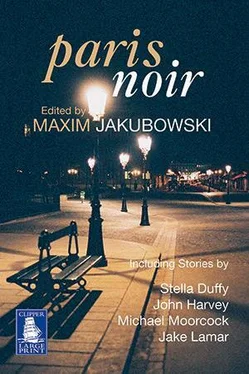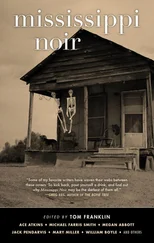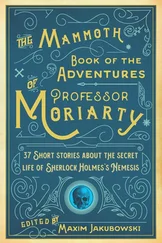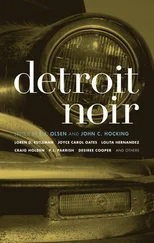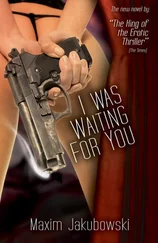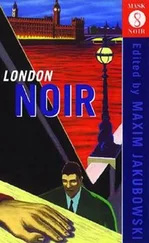Maxim Jakubowski - Paris Noir
Здесь есть возможность читать онлайн «Maxim Jakubowski - Paris Noir» весь текст электронной книги совершенно бесплатно (целиком полную версию без сокращений). В некоторых случаях можно слушать аудио, скачать через торрент в формате fb2 и присутствует краткое содержание. Жанр: Детектив, на английском языке. Описание произведения, (предисловие) а так же отзывы посетителей доступны на портале библиотеки ЛибКат.
- Название:Paris Noir
- Автор:
- Жанр:
- Год:неизвестен
- ISBN:нет данных
- Рейтинг книги:3 / 5. Голосов: 1
-
Избранное:Добавить в избранное
- Отзывы:
-
Ваша оценка:
- 60
- 1
- 2
- 3
- 4
- 5
Paris Noir: краткое содержание, описание и аннотация
Предлагаем к чтению аннотацию, описание, краткое содержание или предисловие (зависит от того, что написал сам автор книги «Paris Noir»). Если вы не нашли необходимую информацию о книге — напишите в комментариях, мы постараемся отыскать её.
Edited by Maxim Jakubowski, the stories range from quietly menacing to spectacularly violent, and include contributions from some of the most famous crime writers from both sides of the Atlantic, as well as the other side of the Channel.
Paris Noir — читать онлайн бесплатно полную книгу (весь текст) целиком
Ниже представлен текст книги, разбитый по страницам. Система сохранения места последней прочитанной страницы, позволяет с удобством читать онлайн бесплатно книгу «Paris Noir», без необходимости каждый раз заново искать на чём Вы остановились. Поставьте закладку, и сможете в любой момент перейти на страницу, на которой закончили чтение.
Интервал:
Закладка:
But the grey wolf had to return to the one street that mattered to him – the rue Daguerre. He promised himself that he wouldn’t look into the window of Marie’s salon, but he did look. And the shampouineuse was at her station, the little throne that her customers sat in while she washed their hair.
Marie had welts under her eyes, bruises printed on her face. The bell attached to the door clacked as Cal entered the salon. The hairdressers were not happy to see him. Still, Cal sat down on Marie’s throne. She clipped the plastic bib to his collar, but would not offer Cal the simplest sign of recognition. The shampouineuse was like a machine with bruised eyes.
‘Monsieur,’ she said, gripping him by the cars and pulling his head back into the basin. The first drop of shampoo excited him. His scalp burned with a liquid fire. Then her hands caressed the soft pit of skin that covered his crown. He blinked, his head rising above the basin for a moment – Mélodie and her two assassins stood outside the window. But Cal no longer cared. His head sank back into the basin. He would rupture time with his own implacable logic. All he had to do was convince the shampouineuse never to take her fingers out of his hair.
GUY GEORGES’ FINAL CRIME by ROMAIN SLOCOMBE
At work, in the design department, in the corridors and the canteen too, it was all the women were talking about. The RTL announcer had been first to broadcast the news, at 7 a.m. on that Thursday 26th March 1998. And the other radio stations soon swung into action.
After long months of investigations, the police have finally named France’s most wanted man, the serial killer of east Paris. His name is Guy Georges. Thousands of copies of his photograph have been circulated to the police; every officer has been issued with one. A manhunt has been launched, his arrest is now only a matter of hours…
Julie Coray, sitting at a table at the back of the Reader’s Digest magazine canteen in Bagneux, a southern suburb of Paris, raises her glass of mineral water and smiles at her colleagues: ‘At last I’ll be able to go home in peace tonight. It’s been horrific, especially on the nights we’re going to press: my road’s really badly lit and when you come out of the Métro around midnight or one in the morning, I can’t tell you how awful it is…’
‘Where d’you live, Julie?’ asked Farida, the new editorial assistant.
‘Between Denfert and Gaîté. Rue Cels, next to Montparnasse cemetery… In the fourteenth.’
Sylvie Mariani, the picture editor, shrugged her shoulders: ‘You weren’t in much danger, anyway: that’s outside the killer’s stamping ground. The guy only operated around Bastille…’
Slightly miffed, Julie cut herself a piece of ham and mushroom pie, muttering: ‘Yeah, but still…’
Farida, in her guttural Maghrebi accent, came to her rescue: ‘Well, I’d like to see you do it, Sylvie… You’re married and you go home early to feed your kids. But for four months women have been scared stiff, I swear, at night it’s terrifying. You let yourself into your building looking over your shoulder in case some guy with a knife’s about to jump you and force you to go up with him… Bastille or anywhere else, it’s the same, I don’t see the difference. Once you’ve been raped and murdered, you’ve been raped and murdered. It’s too late to put up your hand and say “Hey, mister, that’s cheating, this isn’t your patch!’”
Farida had a point and her colleagues all giggled, Sylvie included. They could laugh, now that the nightmare was over, A nightmare for Paris’s female population that had been going on since the end of November, with the discovery – by her own father – of Estelle Magd’s body, raped, her throat slit, in her home. After years of bewildering judicial negligence and bureaucratic incompetence, the police had finally made the link between different cases that had strange similarities. Examining magistrates working on rape and murder cases that bore the hallmark of the same sexual criminal had agreed to share the evidence in their possession. Now DNA test results were being compared in public and private laboratories all over France. Mainstream newspapers and magazines had got hold of the story, at the risk of unleashing a panic: a bloodthirsty wolf, a psychopathic killer – he was North African, Egyptian to be precise, they said (on account of a footprint discovered in a pool of blood, the second toe longer than the big toe) – was terrorising Paris, slitting the throats of lone, pretty young women in car parks or in their homes. A steady stream of suspects were questioned but to no avail, photos on file of thousands of offenders were shown to the only survivor who’d been able to get a good look at the killer, but in vain. Photofits of the olive-skinned man followed, none of them reliable. Gossip and fanciful accusations threatened to jam the switchboard of the Paris murder squad headquarters, women trembled with fear, and gallant men saw their colleagues of the supposedly weaker sex all the way home at night…
And twenty-four-year-old Julie Coray, a striking brunette from Rennes who’d recently arrived in Paris, landing this rather well-paid job as graphic designer for the French edition of Reader’s Digest Select Editions, would shudder every evening as she inserted her key in the lock of her small studio flat, on the top floor of a dilapidated building on rue Cels.
From the neighbouring desk, Robert Flageul – usually in charge of rewriting dramatic first-hand accounts and other ‘human interest stories’ that the review pre-digested each month with the aim of bringing tears to pensioners’ eyes – cut in, addressing the picture editor: ‘Plus you had it all wrong, Sylvie. ‘The beast of Bastille’, ‘the east Paris killer’, it’s all just tabloid cliché, I shouldn’t have to tell you that. The first crime attributed to this Guy Georges was Pascale Escarfail, the humanities student, murdered on the 24th of January ‘91 in her flat in the fourteenth arrondissement, on rue Delambre, just round the corner from Julie, which is a long way from Bastille, and more south than east. And other times he rampaged through the thirteenth, the tenth, the nineteenth… His turf seems pretty vast to me. Not to mention the assaults he must have committed before they’d made the link with him…’
Back in design, Julie Coray saw that her boss, the magazine’s art director, wasn’t yet back from his lunch with an illustrator at the Japanese restaurant next to the motorway, below the RER station. Knowing Gilles – a cigar-smoker and something of a foodie, too – he wouldn’t return before 3 p.m., so she had time to make a call before carrying on with the layout. Julie rang the mobile number of Claire, her best friend, a Breton like her. Claire Le Flohic was in her sixth year of medicine and was doing her internship at Cochin Hospital.
She answered after the fourth ring. ‘Oh, it’s you? Your name didn’t come up… You’re lucky I answered, I was about to reject the call, I’m on duty till tonight.’
‘I’m calling from the land line, at the magazine. Did you hear the news?’
The young intern answered in a voice quivering with excitement: ‘You bet! In fact, I wasn’t allowed to tell anyone but I’d known for two days they were going to get him. My cousin’s working at the Nantes lab that found the killer’s DNA. They’d been on the case for weeks, they compared it manually with 3,500 specimens before they found it. Suddenly there it was, just like that, bingo! They couldn’t believe their eyes! Amazing…!’
Twenty-four years old like Julie, Claire was a true-crime fan and passionate about forensic medicine, which she intended to specialise in. She was already pestering the professor to let her attend autopsies in criminal cases – in theory, off limits to trainees – during which Claire impressed him with her knowledge of heparic temperature, rigor mortis and dermabrasions, as well as marks from blows and wounds. The case of the ‘east Paris killer’ literally fascinated her, and Claire was convinced that she herself resembled one of the psychopath’s victims, found raped and murdered in an underground car park on boulevard Reuilly in January 1994: Catherine Rocher, a pretty, twenty-seven-year-old marketing assistant. ‘A tall girl with long brown hair, well mine’s more chestnut and very long, but we both have a straight nose, a long smiling face and we’re full of life! The killer goes for that kind of girl. If I were a psychological profiler, I’d infer that he’d been very unhappy when he was young, his parents probably knocked him about, he had a difficult childhood, is unemployed, has already done time for rape or assault, he lives in a squat, maybe prostitutes himself and is ashamed of it. He’s angry with the whole world and especially when he sees a beautiful girl go by, looking happy, he can’t help it, he’s compelled to follow her home, tie her up and rape her… And afterwards, he slashes her, aiming for the neck. There was blood all over the fl-’
Читать дальшеИнтервал:
Закладка:
Похожие книги на «Paris Noir»
Представляем Вашему вниманию похожие книги на «Paris Noir» списком для выбора. Мы отобрали схожую по названию и смыслу литературу в надежде предоставить читателям больше вариантов отыскать новые, интересные, ещё непрочитанные произведения.
Обсуждение, отзывы о книге «Paris Noir» и просто собственные мнения читателей. Оставьте ваши комментарии, напишите, что Вы думаете о произведении, его смысле или главных героях. Укажите что конкретно понравилось, а что нет, и почему Вы так считаете.
